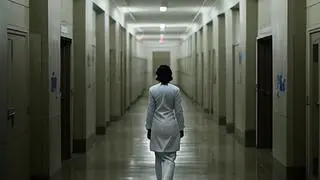It is a decision that’s hard to make and, yet, discussions on withdrawing life support to terminally ill patients are a daily affair in hospitals between families of patients and their doctors, says Dr RV Asokan, national president of the Indian Medical Association (IMA), reflecting on the draft guidelines recently circulated by the Union Health Ministry.
Doctors (and others) have time till October 20 to submit their reponses to the Ministry. In fact, October is a critical month related to the “doctor’s dilemma” involving “assisted dying” in Britain as well, where lawmakers are set to vote (on October 16) on a Bill to allow assisted death for the terminally ill.
Different countries have different, progressive approaches to withdrawing life support, under differing circumstances. But India’s recent draft guidelines have left some in the medical fraternity unhappy.
“The ICU is a place where there is trust between patient and the doctor,” says Asokan, adding that you cannot have national rules built on mistrust. Outlining doctors’ concerns, he says the draft has called for two medical boards to watch over the decision to withdraw life-sustaining treatment. “We are okay with the primary medical board but not comfortable with the secondary board,” he says, because, in addition to doctors, it includes the chief medical officer of the district.
Right to oversee
Overseeing the medical approach should be left to doctors, he says, and not to representatives of the administration, even if they are doctors. The suggestion is to include members of the critical care association, for example, who are qualified to understand the sensitivity and nuances of the situation, he explains.
But wouldn’t that operate like an old boy’s club that will not call out an erroneous approach? “No two doctors agree on a point,” he says, adding that the decision is always taken by the family, with medical guidance from the doctor.
The other area of concern is the pathway outlined by the draft, he says. Many pathways are possible — depending on the situation, illness, disease progression, age, and so on — so there is a need for flexibility or ‘elbow room’ for doctors to operate, he explains. As for malpractices, he says they can be addressed by the grievance redressal mechanisms in hospitals. Besides, he adds, there is a need to differentiate between hospitals as an industry and medical professionals.
It is an emotional and ethical issue that divides people — as seen from the discussions in India and the UK. Whichever way the two countries decide on, it will have to tread lightly between individual choice and ensuring a watertight system to prevent misuse.







Comments
Comments have to be in English, and in full sentences. They cannot be abusive or personal. Please abide by our community guidelines for posting your comments.
We have migrated to a new commenting platform. If you are already a registered user of TheHindu Businessline and logged in, you may continue to engage with our articles. If you do not have an account please register and login to post comments. Users can access their older comments by logging into their accounts on Vuukle.